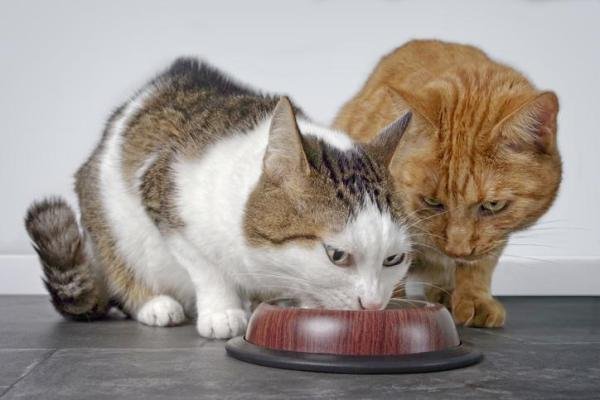In multi-cat households, one common issue that many cat owners face is one cat eating another cat’s food. This behavior can lead to conflicts and stress among the cats involved. Understanding why this behavior occurs and how to manage it is essential for maintaining harmony in the home. By exploring cats’ natural tendencies, understanding the dynamics of hierarchy and dominance, and implementing appropriate feeding strategies, cat owners can help ensure that each cat receives the right amount of food and reduce conflicts over food resources.
Exploring Cats’ Natural Tendencies
Exploring cats’ natural tendencies can shed light on why one cat eats another cat’s food. In multi-cat households, this behavior often stems from instincts related to dominance and resource guarding. Cats may perceive food as a valuable resource, leading to competition, especially if they feel their own food is inadequate or less appealing. Factors such as hierarchy, individual dietary preferences, and environmental influences can also play a role. Understanding these behaviors can help cat owners manage feeding arrangements to ensure each cat receives the appropriate amount of food and reduce conflicts over food resources.
How It Affects Food Behavior?
Hierarchy and dominance among cats can significantly affect their food behavior, especially in multi-cat households where one cat eats another cat’s food. Dominant cats may assert control over resources, including food, leading to conflicts and food theft. Subordinate cats may feel compelled to give up their food or wait until the dominant cat has finished. This behavior can create stress and anxiety, affecting the overall well-being of the cats involved. Understanding the dynamics of dominance can help cat owners manage feeding times and locations to minimize conflicts and ensure each cat receives an adequate share of food.
Understanding Food Possession in Cats
Understanding food possession in cats is essential for addressing the common issue of one cat eating another cat’s food. This behavior often stems from cats’ instinctual need to protect valuable resources, including food. In multi-cat households, establishing separate feeding areas and ensuring each cat feels secure in its access to food can help prevent conflicts and ensure each cat receives the appropriate nutrition.
Why Some Cats Prefer Other Food?
Why some cats prefer other food, even when it belongs to another cat, can be attributed to various factors. Cats have individual dietary preferences influenced by taste, texture, and smell. Additionally, a cat may perceive the other cat’s food as more desirable due to its presentation or novelty. Understanding these preferences can help owners provide suitable meal options and reduce competition between cats over food resources.
How the Feeding Setup Can Influence Behavior?
How the feeding setup can influence behavior in multi-cat households, leading to one cat eating another cat’s food, is a crucial consideration for cat owners. Factors such as the proximity of food bowls, the number of feeding stations, and the types of bowls used can all impact cats’ mealtime behavior. Providing separate feeding areas and ensuring each cat has easy access to its food can help reduce conflicts and promote peaceful mealtimes.
When Eating Habits Signal Medical Issues?
When eating habits signal medical issues, such as one cat eating another cat’s food, it’s essential to consider potential underlying health concerns. Cats may exhibit changes in appetite or food preferences due to dental problems, gastrointestinal issues, or metabolic disorders. Consulting with a veterinarian can help rule out any medical issues and ensure that each cat receives the appropriate care and nutrition to maintain their health and well-being.
Tips for Managing Food Aggression
Tips for managing food aggression can help alleviate conflicts over food in multi-cat households. Providing separate feeding areas and ensuring each cat has its own food bowl can help reduce competition. Feeding cats in different rooms or at different times can also minimize conflicts. Additionally, offering a variety of food options and monitoring each cat’s behavior during mealtime can help identify and address any potential issues early on.
Ensuring Each Cat Gets the Right Amount of Food
Ensuring each cat gets the right amount of food can help prevent one cat from eating another cat’s food. Feeding cats according to their individual needs, based on factors like age, weight, and activity level, is crucial. Using portion-controlled feeding methods, such as timed feedings or automatic feeders, can help prevent overeating and reduce the likelihood of food theft. Monitoring each cat’s weight and adjusting their portions as needed can also help maintain their health and prevent conflicts over food resources.
Conclusion
understanding the reasons behind why one cat may eat another cat’s food is key to addressing this common issue in multi-cat households. By considering cats’ natural tendencies, hierarchy dynamics, and environmental influences, owners can implement strategies to reduce conflicts and ensure each cat receives the right amount of food. Managing food aggression, offering varied meal options, and monitoring for any health issues are crucial steps to maintaining harmony and the well-being of all feline companions in the household.
